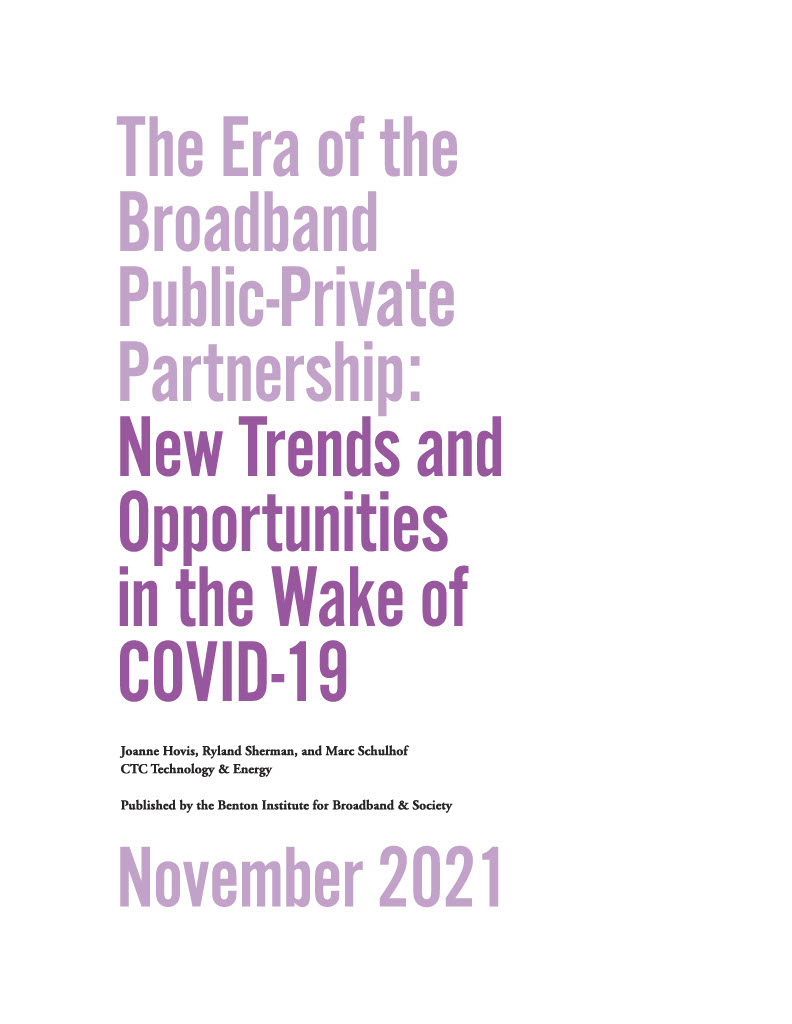The Era of the Broadband Public-Private Partnership: New trends and opportunities in the wake of COVID-19
Written by Joanne Hovis, Ryland Sherman, and Marc Schulhof
CTC Technology & Energy
It is the era of the broadband public-private partnership.
As of the fall of 2021, a remarkable wave of public-private collaboration in broadband is underway—a wave that began in the early months of the COVID-19 pandemic and will likely reach a crest in the next few years as many tens of billions of dollars of public and private capital are invested in next-generation broadband.
The pandemic accelerated a number of important preexisting trends:
- The influx of private capital—including both private equity and major increases in investment by incumbents—that has supercharged the fiber-to-the-premises market;
- The growing willingness of state and federal appropriators to invest in deployment of best-in-class broadband facilities;
- The urgent willingness of local policymakers to invest in broadband infrastructure, with particular focus on working with private ISPs; and
- The growing willingness of various types of ISPs to work with local communities to achieve win-win outcomes that meet local broadband policy goals and improve private network deployment economics.
These trends predate the pandemic, and, indeed, all of these dynamics emerged in the 2015–2020 time period. But COVID-19 demonstrated to American policymakers the absolute need for plentiful connectivity and the crises faced by those who don’t have it—and simultaneously demonstrated to private investors the economic potential of best-in-class, future-proof broadband.
This report discusses these trends and reviews how recent changes in broadband performance demands, federal and state funding programs, and community and investor interests have increased the potential for new public-private partnerships in broadband.
This document was commissioned by the Communications Workers of America and prepared by CTC Technology & Energy in the summer and fall of 2021.
Additional Reading
The Era of the Broadband Public-Private Partnership (article)
Evaluating Public-Private Collaboration Proposals (checklist)
Qualifications, Standards, and Best Practices that Promote Quality and Safety (checklist)
The Emerging World of Broadband Public–Private Partnerships: A Business Strategy and Legal Guide (2017)


